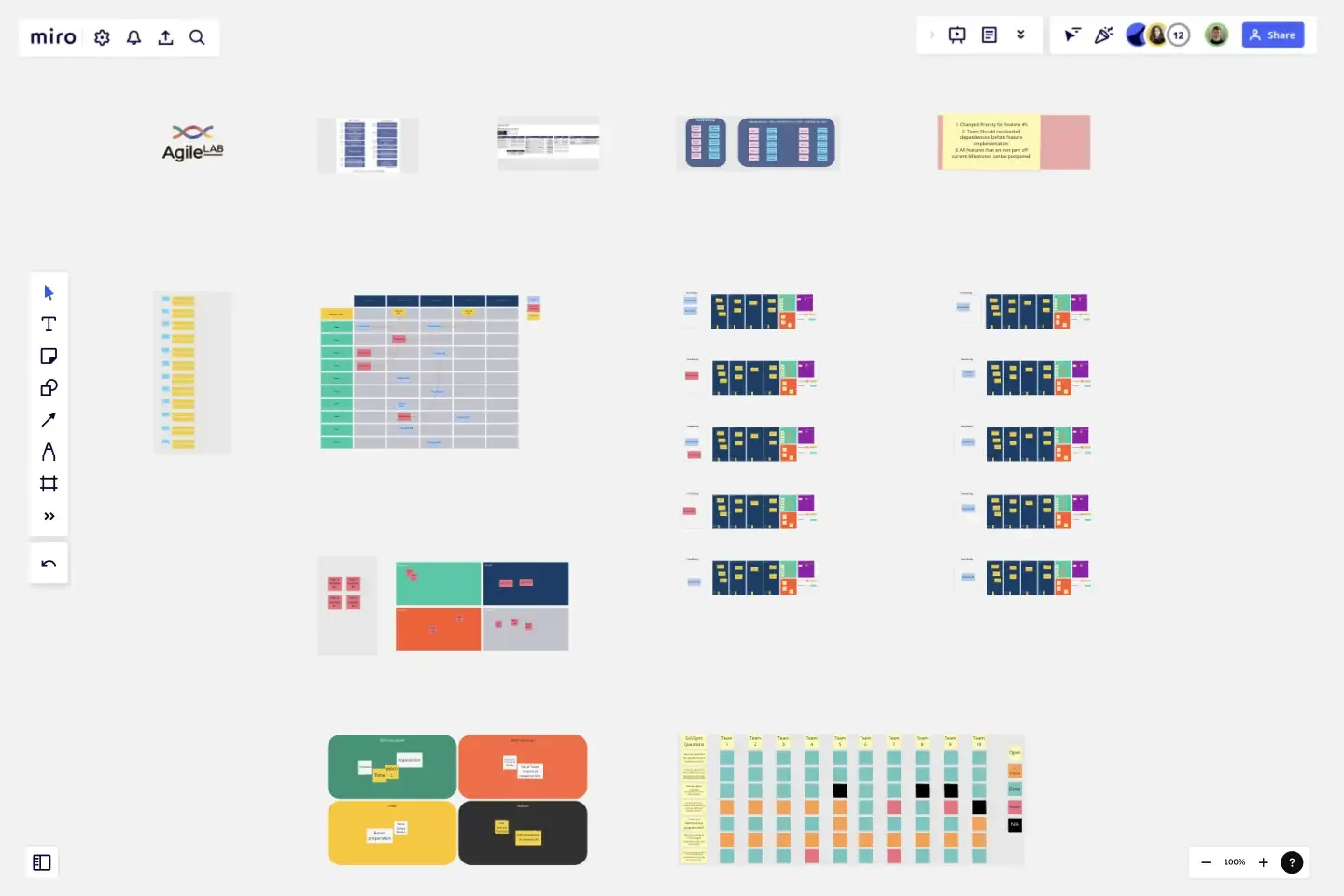SAFe PI Planning
Current Template will help you to save time on preparation and increase the levels of event Facilitation.
Introduction to PI Planning: A Quick Overview Program Increment (PI) Planning is a cadence-based, face-to-face event that serves as the heartbeat of the Agile Release Train (ART), aligning all the teams on the ART to a shared mission and Vision. PI planning is essential to SAFe: If you are not doing it, you are not doing SAFe.
It may not always be practical for the entire Agile Release Train (ART) to collocate however, and in our current times COVID-19 has created a situation where this isn’t an option. While physical face to face planning has its benefits, the unwritten SAFe ‘rule’ is “the people who do the work plan the work.” When physical presence is not possible, real time, concurrent, virtual, face to face planning has now proven to be effective. Indeed many ARTs have been successful in creating a hybrid situation where several teams join remotely.
Tooling is the cornerstone of distributed PI planning and several different types of PI Planning tools are required in combination to support the activities that take place.
Here you have all you need to facilitate PI Planning:
Program Backlog
Program Board
Team Board
Program Risks
SoS Checklist
Areas for Agenda, Logistic, Management Adjustments
Planning Retrospective template
This template was created by Maxim Batalin.
Get started with this template right now.
SIPOC by Dagmar Vlahos
Works best for:
Agile Methodology
The SIPOC template by Dagmar Vlahos provides a structured framework for documenting the high-level process flow of a system or project. It helps teams identify Suppliers, Inputs, Processes, Outputs, and Customers, facilitating a holistic understanding of the value stream. By visualizing key process elements and interdependencies, this template enables teams to identify areas for improvement and optimize workflow efficiency, empowering organizations to deliver value more effectively and satisfy customer needs.
Roadmap Planning Template
Works best for:
Roadmap, Agile
The Roadmap Planning Template in Miro is a dynamic tool designed to streamline the process of planning and tracking project milestones. This template is part of Miro's Intelligent Templates offering, which integrates AI, interactive widgets, and automation to enhance productivity. One key feature of this template is its real-time collaboration capability, allowing team members to work together seamlessly, regardless of their location. This feature ensures that everyone is on the same page, making it easier to assign tasks, set deadlines, and track progress effectively.
Agile Marketing Kanban
Works best for:
Agile, Kanban
The Agile Marketing KANBAN template adapts Kanban principles to the marketing domain, enabling teams to manage campaigns, tasks, and workflows efficiently. It provides visual boards for planning, prioritizing, and tracking marketing activities, ensuring alignment with strategic goals and timely delivery of campaigns. With customizable columns and swimlanes, this template empowers marketing teams to visualize work, limit work in progress, and optimize their processes, driving agility and effectiveness in marketing operations.
Kanban Pizza Game
Works best for:
Agile, Kanban
The Kanban Pizza Game is an interactive way for teams to learn and apply Kanban principles. By simulating a pizza delivery process, teams experience how to visualize work, limit work in progress, and optimize flow. Through rounds of iteration and reflection, participants gain insights into continuous improvement and lean thinking, fostering collaboration and driving efficiency. Get ready to slice through inefficiencies and deliver value faster with the Kanban Pizza Game!
Mad Sad Glad Retrospective
Works best for:
Brainstorming, Ideation
It's tempting to measure a sprint’s success solely by whether goals and timelines were met. But there’s another important success metric: emotions. And Mad Sad Glad is a popular, effective technique for teams to explore and share their emotions after a sprint. That allows you to highlight the positive, underline the concerns, and decide how to move forward as a team. This template makes it easy to conduct a Mad Sad Glad that helps you build trust, improve team morale, and increase engagement.
PI Planning Template
Works best for:
Agile Methodology, Strategic Planning, Software Development
PI planning stands for “program increment planning.” Part of a Scaled Agile Framework (SAFe), PI Planning helps teams strategize toward a shared vision. In a typical PI planning session, teams get together to review a program backlog, align cross-functionally, and decide on the next steps. Many teams carry out a PI planning event every 8 to 12 weeks, but you can customize your planning schedule to fit your needs. Use PI planning to break down features, identify risks, find dependencies, and decide which stories you’re going to develop.
